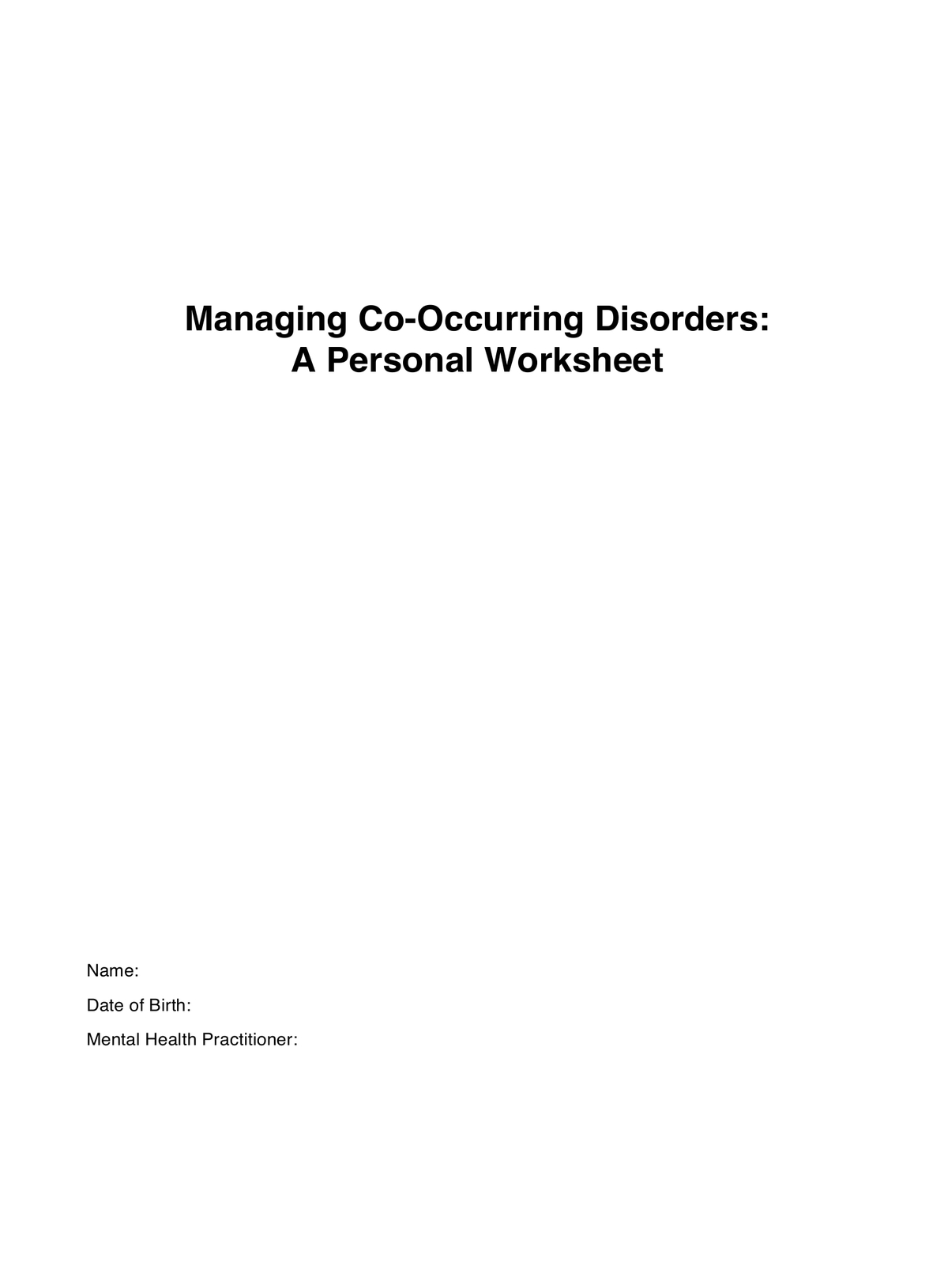Common mental health disorders in co-occurring disorders include depression, anxiety disorders, bipolar disorder, post-traumatic stress disorder (PTSD), schizophrenia, attention-deficit/hyperactivity disorder (ADHD), borderline personality disorder (BPD), and eating disorders. Individuals with co-occurring disorders face the challenge of identifying and managing both their mental health problems and substance use issues, emphasizing the need for integrated treatment strategies and approaches.

Co-occurring Disorders Worksheets PDF
Learn more about co-occurring disorders and how they can impact someone during their life. Utilize this worksheet to support your clients.
Use Template
Co-occurring Disorders Worksheets PDF Template
Commonly asked questions
The order varies. Mental illness may precede substance abuse, alcohol, or substance and following other abuse can worsen existing mental health issues.
Yes, co-occurring disorders are common, with many individuals experiencing both mental health problems and substance use disorders simultaneously.
EHR and practice management software
Get started for free
*No credit card required
Free
$0/usd
Unlimited clients
Telehealth
1GB of storage
Client portal text
Automated billing and online payments











